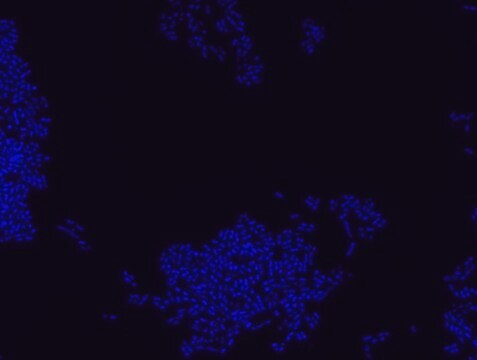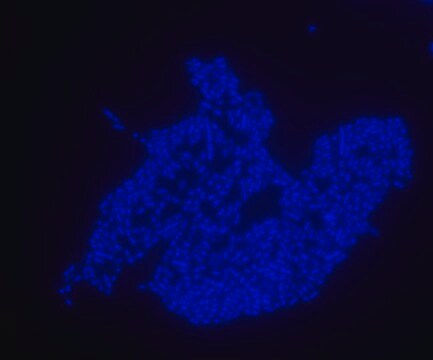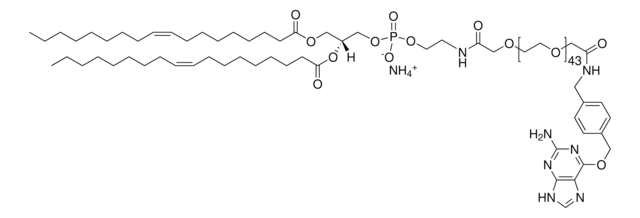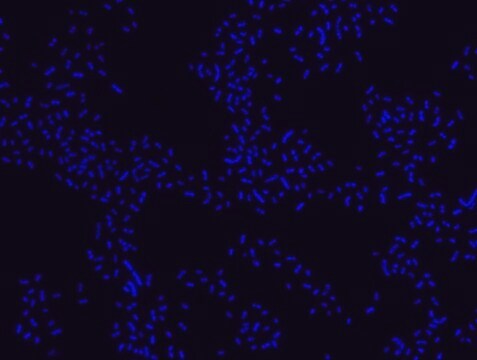おすすめの製品
詳細
Fluorescent In Situ Hybridization technique (FISH) is based on the hybridization of fluorescent labeled oligonucleotide probe to a specific complementary DNA or RNA sequence in whole and intact cells.1 Microbial FISH allows the visualization, identification and isolation of bacteria due to recognition of ribosomal RNA also in unculturable samples.2
FISH technique can serve as a powerful tool in the microbiome research field by allowing the observation of native microbial populations in diverse microbiome environments, such as samples from human origin (blood3 and tissue4), microbial ecology (solid biofilms 5 and aquatic systems 6) and plants 7.
Prokaryotic single cell life forms are divided into two domains, called Bacteria and Archaea, originally categorized as Eubacteria and Archaebacteria.8 However both terms, Eubacteria and Bacteria are still being used in microbiology.
The Negative control non-specific, nonsense probe, is used in the FISH experiments to detect nonspecific binding of the probes and set the appropriate conditions for the experiment.9
The negative control probe was used in FISH technique on various samples such as, pure culture (as described in the figure legends) and blood cultures9,10.
It is strongly recommended to include positive and negative controls in FISH assays to ensure specific binding of the probe of interest and appropriate protocol conditions. We offer positive (MBD0032/33) and negative (MBD0034/35) control probes, that accompany the specific probe of interest.
FISH technique can serve as a powerful tool in the microbiome research field by allowing the observation of native microbial populations in diverse microbiome environments, such as samples from human origin (blood3 and tissue4), microbial ecology (solid biofilms 5 and aquatic systems 6) and plants 7.
Prokaryotic single cell life forms are divided into two domains, called Bacteria and Archaea, originally categorized as Eubacteria and Archaebacteria.8 However both terms, Eubacteria and Bacteria are still being used in microbiology.
The Negative control non-specific, nonsense probe, is used in the FISH experiments to detect nonspecific binding of the probes and set the appropriate conditions for the experiment.9
The negative control probe was used in FISH technique on various samples such as, pure culture (as described in the figure legends) and blood cultures9,10.
It is strongly recommended to include positive and negative controls in FISH assays to ensure specific binding of the probe of interest and appropriate protocol conditions. We offer positive (MBD0032/33) and negative (MBD0034/35) control probes, that accompany the specific probe of interest.
アプリケーション
Probe for fluorescence in situ hybridization (FISH), negative control probe used to detect nonspecific binding.
特徴および利点
- Detection of nonspecific binding of tested probes.
- Verification of FISH results accuracy.
- Calibration of FISH experiment appropriate conditions.
- Can be used to control for nonspecific binding in variuos samples such as, blood cultures and pure cultures.
- The ability to detect bacteria in its natural habitat is an essential tool for studying host-microbiome interaction.
保管分類コード
12 - Non Combustible Liquids
WGK
nwg
引火点(°F)
Not applicable
引火点(℃)
Not applicable
適用法令
試験研究用途を考慮した関連法令を主に挙げております。化学物質以外については、一部の情報のみ提供しています。 製品を安全かつ合法的に使用することは、使用者の義務です。最新情報により修正される場合があります。WEBの反映には時間を要することがあるため、適宜SDSをご参照ください。
Jan Code
MBD0034-VAR:
MBD0034-50UL:
MBD0034-50UL-PW:
試験成績書(COA)
製品のロット番号・バッチ番号を入力して、試験成績書(COA) を検索できます。ロット番号・バッチ番号は、製品ラベルに「Lot」または「Batch」に続いて記載されています。
Dorothee Maria Gescher et al.
International journal of antimicrobial agents, 32 Suppl 1, S51-S59 (2008-08-23)
Sepsis is a life-threatening disease with a high mortality rate. Rapid identification of blood culture isolates plays a crucial role in adequate antimicrobial therapy in sepsis patients. To accelerate microbiological diagnosis, a comprehensive panel of oligonucleotide probes for fluorescence in
C R Woese et al.
Proceedings of the National Academy of Sciences of the United States of America, 87(12), 4576-4579 (1990-06-01)
Molecular structures and sequences are generally more revealing of evolutionary relationships than are classical phenotypes (particularly so among microorganisms). Consequently, the basis for the definition of taxa has progressively shifted from the organismal to the cellular to the molecular level.
V A Kempf et al.
Journal of clinical microbiology, 38(2), 830-838 (2000-02-03)
Using fluorescent in situ hybridization (FISH) with rRNA-targeted fluorescently labelled oligonucleotide probes, pathogens were rapidly detected and identified in positive blood culture bottles without cultivation and biotyping. In this study, 115 blood cultures with a positive growth index as determined
Cathleen Schlundt et al.
Molecular ecology resources, 20(3), 620-634 (2019-11-30)
Plastic marine debris (PMD) affects spatial scales of life from microbes to whales. However, understanding interactions between plastic and microbes in the "Plastisphere"-the thin layer of life on the surface of PMD-has been technology-limited. Research into microbe-microbe and microbe-substrate interactions
Jiming Jiang
Chromosome research : an international journal on the molecular, supramolecular and evolutionary aspects of chromosome biology, 27(3), 153-165 (2019-03-11)
Fluorescence in situ hybridization (FISH) was developed more than 30 years ago and has been the most paradigm-changing technique in cytogenetic research. FISH has been used to answer questions related to structure, mutation, and evolution of not only individual chromosomes but
ライフサイエンス、有機合成、材料科学、クロマトグラフィー、分析など、あらゆる分野の研究に経験のあるメンバーがおります。.
製品に関するお問い合わせはこちら(テクニカルサービス)








